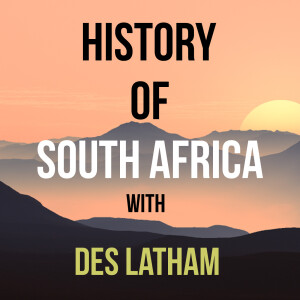
History of South Africa podcast
History

This is episode 23 and its time to shift our attention away from the Dutch in the Cape to the amaXhosa.
At the turn of the 18th Century there were signs of increased conflict in the region as the Khoekhoe began to feel the pressures of the expanding Dutch settlements which spread out from the southern Cape.
The boundaries of the territory occupied by the Xhosa fluctuated considerably over time but in the years between 1700 and the mid 1800s they were limited to the area east of the Sunday’s River and West of the Mbashe River. They lived along the coastal strip which separates South Africa’s inland plateau from the Indian Ocean.
It’s an area of temperate grassland which yields a variety of crops such as maize, sorghum, tobacco and pumpkins. However the soils are shallow and better suited to stock farming rather than intensive agriculture. Rain falls in a succession of thunder storms through Summer – basically between October and February. The land is well drained by numerous short rivers which run from the escarpment down to the sea.
None of these is navigable for any great distance and the Xhosa have no taste for fish nor a tradition of building boats. There are no mineral deposits of any significance – those that exist are ironstone around the Tyhume and Kei Rivers. And yet they were and are a metal working people having traded metals with people further west and north for generations.
The landscape is incredibly varied – and these characteristics have led to diverse clan associations as we’ll see. It is very important to note that as a people, the Xhosa’s traditions stretch back far longer than the Zulu, their more powerful neighbours to the north.
To simplify things we identify four major groups of Xhosa in adjacent belts running parallel to the coast. IN the far north close to the mountains of the interior – the Drakensburg as well as a second tier of smaller ranges further south – few Xhosa settled.
view more
At the turn of the 18th Century there were signs of increased conflict in the region as the Khoekhoe began to feel the pressures of the expanding Dutch settlements which spread out from the southern Cape.
The boundaries of the territory occupied by the Xhosa fluctuated considerably over time but in the years between 1700 and the mid 1800s they were limited to the area east of the Sunday’s River and West of the Mbashe River. They lived along the coastal strip which separates South Africa’s inland plateau from the Indian Ocean.
It’s an area of temperate grassland which yields a variety of crops such as maize, sorghum, tobacco and pumpkins. However the soils are shallow and better suited to stock farming rather than intensive agriculture. Rain falls in a succession of thunder storms through Summer – basically between October and February. The land is well drained by numerous short rivers which run from the escarpment down to the sea.
None of these is navigable for any great distance and the Xhosa have no taste for fish nor a tradition of building boats. There are no mineral deposits of any significance – those that exist are ironstone around the Tyhume and Kei Rivers. And yet they were and are a metal working people having traded metals with people further west and north for generations.
The landscape is incredibly varied – and these characteristics have led to diverse clan associations as we’ll see. It is very important to note that as a people, the Xhosa’s traditions stretch back far longer than the Zulu, their more powerful neighbours to the north.
To simplify things we identify four major groups of Xhosa in adjacent belts running parallel to the coast. IN the far north close to the mountains of the interior – the Drakensburg as well as a second tier of smaller ranges further south – few Xhosa settled.
More Episodes
012345678910111213141516171819
Create your
podcast in
minutes
- Full-featured podcast site
- Unlimited storage and bandwidth
- Comprehensive podcast stats
- Distribute to Apple Podcasts, Spotify, and more
- Make money with your podcast
It is Free
- Privacy Policy
- Cookie Policy
- Terms of Use
- Consent Preferences
- Copyright © 2015-2024 Podbean.com






